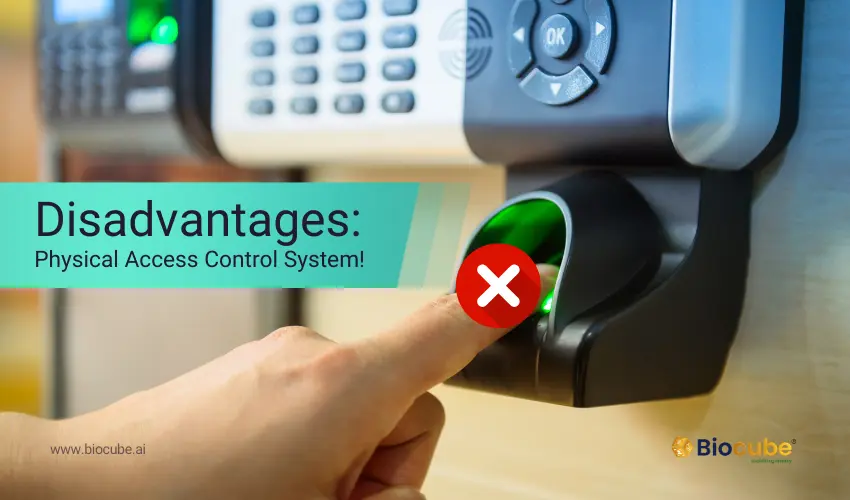
Physical Access Control Systems (PACS), are visible in many corporate buildings, airports, metro stations, etc. Their objective is to restrict access based on specific specified protocols.
The demand for such systems has drastically increased due to rising security concerns in organizations. According to a Statista report, the market of physical security systems would reach an astounding $70 billion in the US alone.
Unfortunately, these systems come with many significant drawbacks, beginning with frequent upgrades to theft vulnerabilities.
Table of Contents
Three Drawbacks of Physical Access Control System (PACS) You Can’t Ignore

1. Require Constant Monitoring
A card reader, swipe machine, tapping system, etc., often requires the physical presence of a service provider or an operator to address the end user’s concerns. Companies often need to hire and train their security staff to understand the functionalities of the physical system.
Even after the training, they require constant connection with a customer service operator to overcome the technical glitches. Moreover, the security staff has to notice whether a new individual is entering the premises.
The chance of an intruder entering the premises of a building through stolen or duplicated punch cards is very high. A slight ignorance on the part of the security staff can lead to data theft, identity theft or fraud, and financial losses.
2. High Cost of Installation & Maintenance
Whether the company is installing a physical biometric, RFID reader, or punch card system to grant access to the building, the cost of the solution is exponentially higher than its more effective counterparts.
According to a source, the average cost of installation of an access control system ranges from $20 to $3500, with an add-on maintenance or software license cost of up to $50. Moreover, the estimated cost of a physical biometric security system in the US ranges from $5000 to $20,000.
The soaring high cost of physical security systems puts a dent in the company’s capital expenditure.
3. Demands Physical Presence
Unlike new-age contactless biometric systems, physical security solutions require the physical presence of the end user at the premises. Employees who go for field work often need to send emails to log their attendance.
Another vulnerability of the RFID/chip card readers is ‘buddy punching.’ A coworker can punch the card of another employee to mark access and attendance, allowing seamless access to restricted areas.
On the other hand, the visitors are required to pre-inform the receptionist about their arrival to get an access pass in advance. At times, the host is also required to arrive at the designated check-in counter if the machine glitches with a visitor pass. Under such a situation, the visitor check-ins remain unmarked until the designated host(s) upload the meeting details.
How to Overcome the Drawbacks of PACS?
A contactless biometric identity system can overcome the drawbacks of PACS. It can grant seamless access to visitors through face recognition technology. Moreover, employees would no longer need to carry their physical punch cards to the present. Their access and attendance can be marked frictionlessly through contactless biometrics.
Furthermore, employees who go out for site visitations or events can mark their attendance or presence at a location through an app. Nowadays, technology can easily integrate into an existing workplace app and grant such functionalities.
Conclusion
Physical Access Control Systems (PACS) pose a serious threat to organizations. They also make the journey of the end user, i.e., employees or visitors, highly inconvenient. Moreover, they constantly create a terrible experience for the users through manual intervention, waiting in queues to receive access cards, and more.
Enterprises must switch to new-age identity solutions that make the access lifecycle convenient and secure. One approach is to opt for contactless biometric identity systems, which can ensure both aspects.
Book a Free Demo to learn more about the specialized advantages such technologies can provide to your organization.
